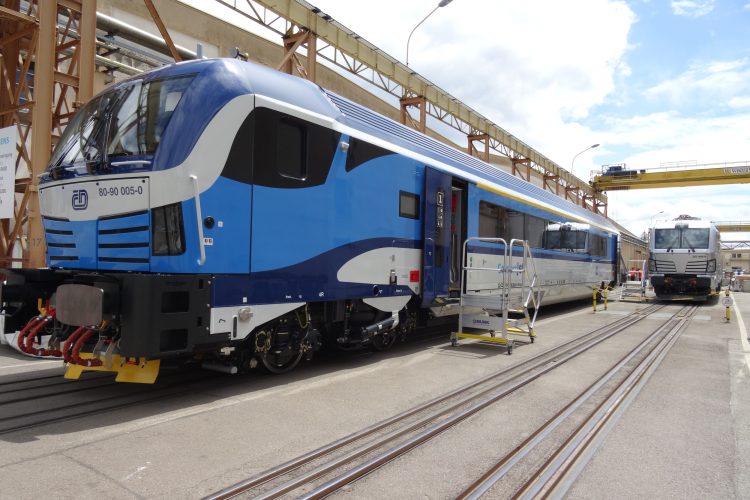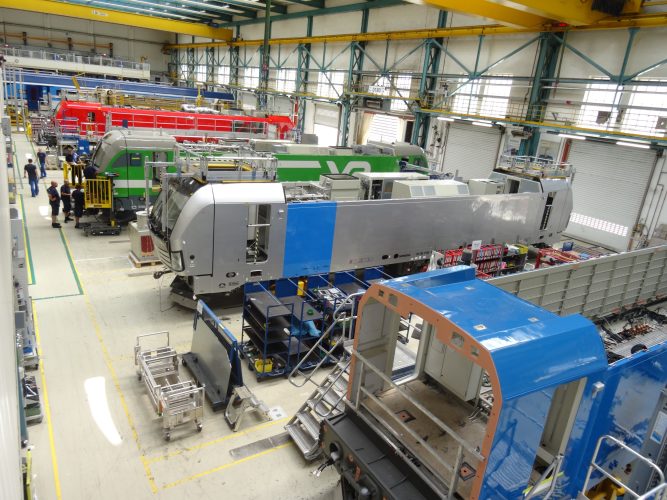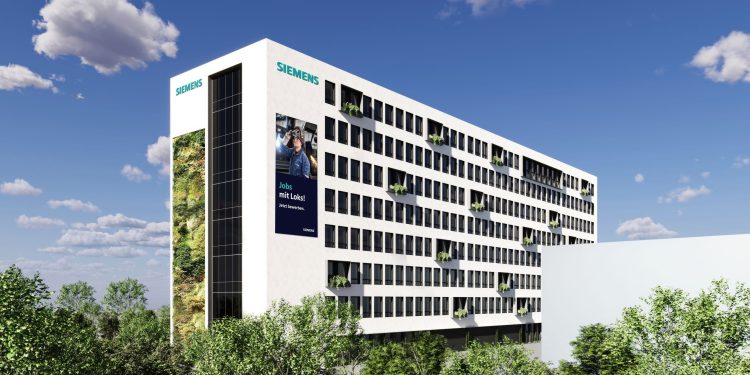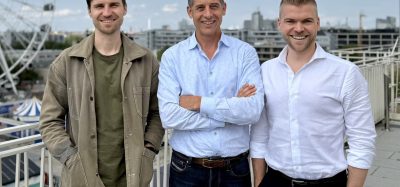Siemens Mobility invests in locomotive production and a new HQ
Posted: 21 July 2025 | Nigel Wordsworth | No comments yet
Siemens Mobility invests €250 million to increase Vectron locomotive output, integrate advanced digital solutions, and consolidate headquarters at Munich-Allach facility.


A Vecturo driving coach fitted with a cab identical to that on a Vectron locomotive Credit: Nigel Wordsworth.
Siemens Mobility has invested around €250 million over the last two years, expanding production facilities and office space at its Munich-Allach factory in Southern Germany.
As a result, the factory is now capable of producing up to 385 Vectron locomotives each year – capacity that is much needed as the order backlog now stands at around 1,000 units. To date, 1,750 Vectron’s have been produced at the Allach facility since the first example was manufactured in 2010 and launched at the InnoTrans exhibition in Berlin later that year.
The success of Vectron can be attributed to its modular construction. This has allowed a number of versions to be built over the years – AC traction only (25 kV AC, 15 kV AC), DC only (3 kV DC, and 1.5 kV DC), combined AC/DC, diesel-powered, bimode diesel/electric and, most recently, an AC model with an extra battery pack to power last-mile shunting.
But it is not just the power systems that vary. Many countries in Europe have their own, unique signalling systems, though adoption of the European Train Control System (ETCS) is starting to simplify arrangements. Still, while crossing a national border also means changing signalling systems, Siemens Mobility is building Vectron locomotives fitted with ETCS Baseline 3 as well as various national systems, with some vehicles authorised for operation in up to 12 different countries.
By expanding the Munich-Allach facilities from 47,000 to over 100,000 square metres, Siemens has provided space for a substantial increase in production capacity. Two production lines are set aside for Vectron production, with one producing a new locomotive every day and the other every day and a half.
In addition, all of the frames, bodies and cabs are also built at Allach, with robots performing long welds on the frames and motorised shuttles helping to run the almost 20km of cables into compact cable trays. Even the painting of the body shells is carried out on site.


One of two production lines for Vectron locomotives at Munich-Allach. Credit: Nigel Wordsworth
Not just locomotive manufacture
A new concept is the Vectrain – a rake of passenger coaches with a Vectron cab at one end so that a driver can easily operate push-pull services either from the Vectron loco that is powering the train or from the Vecturo coach-with-a-cab at the far end of the consist.
Another workshop at Allach is the Rail Service Centre. Here, heavy overhauls are carried out on locos that have covered 1.2 million kilometres in service or that haven’t had a major overhaul in eight years. Accident repairs are also conducted, some minor and some major, with locomotives being returned to service in full working order and, in all likelihood, a fresh coat of paint.
Capacity is being increased from 25 locomotive overhauls and accident repairs annually to 80 by adding four new service tracks as well as specialised facilities for reworking bogies and wheelsets.
Digital systems are not neglected. Around 70 on-site data and software specialists will support international customers with their digital transformations by providing modular services and the Railigent X application suite.
Global HQ
With the expansion of the offices at Allach, Siemens Mobility is moving its headquarters from Munich-Perlach, 23km away. This influx of personnel, together with the need for more technicians in areas such as welding, metalworking, mechatronics and electrical engineering, means that 2,500 people will be working at the site by 2028.


The new offices at Munich-Allach will become the global HQ for Siemens Mobility. Credit: Siemens Mobility
Michael Peter, CEO of Siemens Mobility, said: “Our growth here reflects the development of Siemens Mobility and is a product of our clear strategy: Technology Leadership and being a One Tech Company. This means applying everything we have in Siemens’ portfolio and delivering it from a single source.
“The platform concept is revolutionising our locomotive business. It enables the combination of all variants within the same locomotive, which is crucial for achieving approvals across nearly all European countries by integrating various signalling and drive systems tailored to customer needs.
“For one of our recent orders for Rail Traction Company, we’re delivering locomotives capable of operating across twelve different countries, including between Germany and Serbia.
“Munich-Allach is much more than a factory. It’s a place where domain expertise meets permanent transformation. It’s a place where steel meets software and artificial intelligence. It’s a place where our headquarters and factory are virtually under one roof – together – shaping the transport of the future.”
Stay Connected with Global Railway Review — Subscribe for Free!
Get exclusive access to the latest rail industry insights from Global Railway Review — all tailored to your interests.
✅ Expert-Led Webinars – Gain insights from global industry leaders
✅ Weekly News & Reports – Rail project updates, thought leadership, and exclusive interviews
✅ Partner Innovations – Discover cutting-edge rail technologies
✅ Print/Digital Magazine – Enjoy two in-depth issues per year, packed with expert content
Choose the updates that matter most to you. Sign up now to stay informed, inspired, and connected — all for free!
Thank you for being part of our community. Let’s keep shaping the future of rail together!
Related topics
Digitalisation, European Train Control System (ETCS), Funding & Finance, Infrastructure Developments, Passenger Experience/Satisfaction, Rolling Stock Maintenance, Rolling Stock Orders/Developments, Signalling, Control & Communications, Technology & Software, The Workforce








